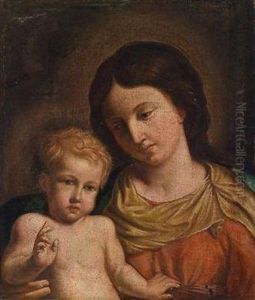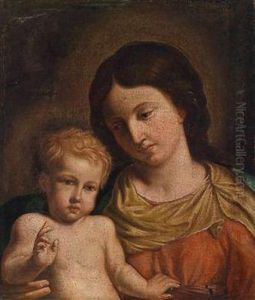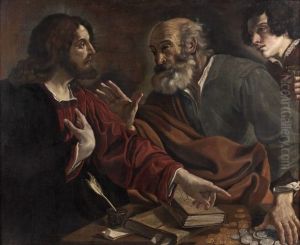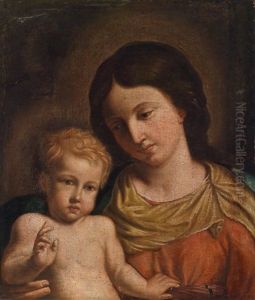Lorenzo Gennari Paintings
Lorenzo Gennari was an Italian painter of the Baroque period, born in 1646 in Cesena, Italy. He was part of a family of artists and his father, Benedetto Gennari, was also a painter. Furthermore, Lorenzo was closely related to the famous Bolognese School of painting; his uncle, Cesare Gennari, and his cousins, Ercole Gennari and Benedetto II Gennari, were all painters who contributed to the family's artistic legacy.
Lorenzo Gennari's work was influenced by the prevailing Baroque style of the time, with its emphasis on dramatic expression, rich coloration, and bold contrast between light and shadow. He was particularly influenced by the works of the Carracci family and their academy, which was a hub of Bolognese artistic life and an important center for the training of artists in Italy during the 17th century. Additionally, Lorenzo's style was influenced by the work of Guercino (Giovanni Francesco Barbieri), who was a leading painter in the Bolognese school and a relative by marriage.
Despite being less well-known than some of his contemporaries, Gennari's contributions to art during the Baroque period were significant. His works include a range of religious subjects, which were common themes during this era, as they catered to the demands of the Counter-Reformation Church, which sought to reaffirm Catholic doctrine through art. Gennari's paintings were known for their devotional intensity and attention to detail, qualities that were appreciated by his patrons.
Lorenzo Gennari's career unfolded during a period when art patronage was evolving, with private collectors and noble families becoming increasingly important. He worked for several of these patrons throughout his career, executing commissions that would adorn private chapels, palaces, and churches. Although his works were primarily seen in Italy, the influence of the Bolognese School extended throughout Europe, and Gennari's artistic legacy remains a part of that broader tapestry.
Lorenzo Gennari passed away in 1719. While he may not have achieved the same level of fame as some of his peers, his works still contribute to the rich history of Italian Baroque painting. Today, Gennari's paintings can be found in various art collections, and they continue to be studied by art historians and appreciated by enthusiasts of Baroque art.



